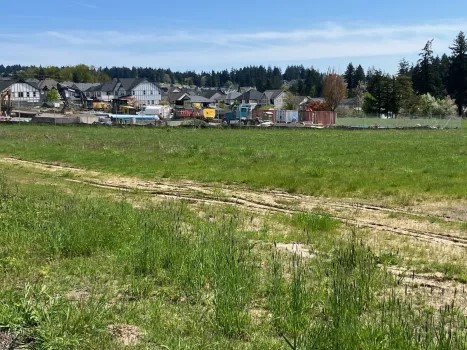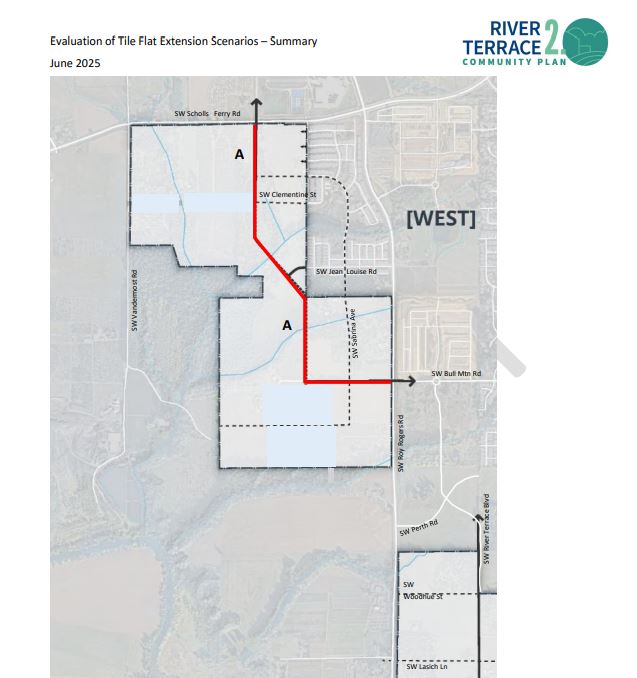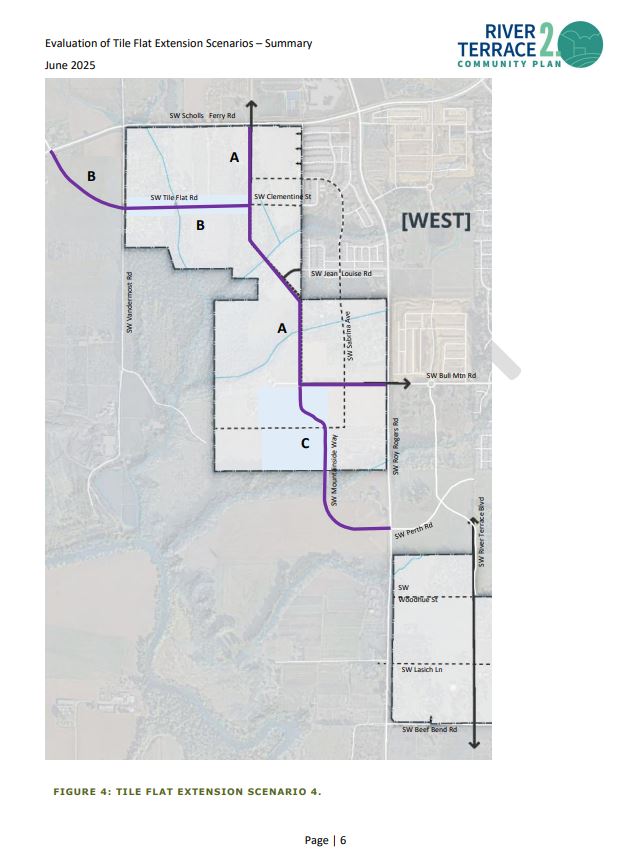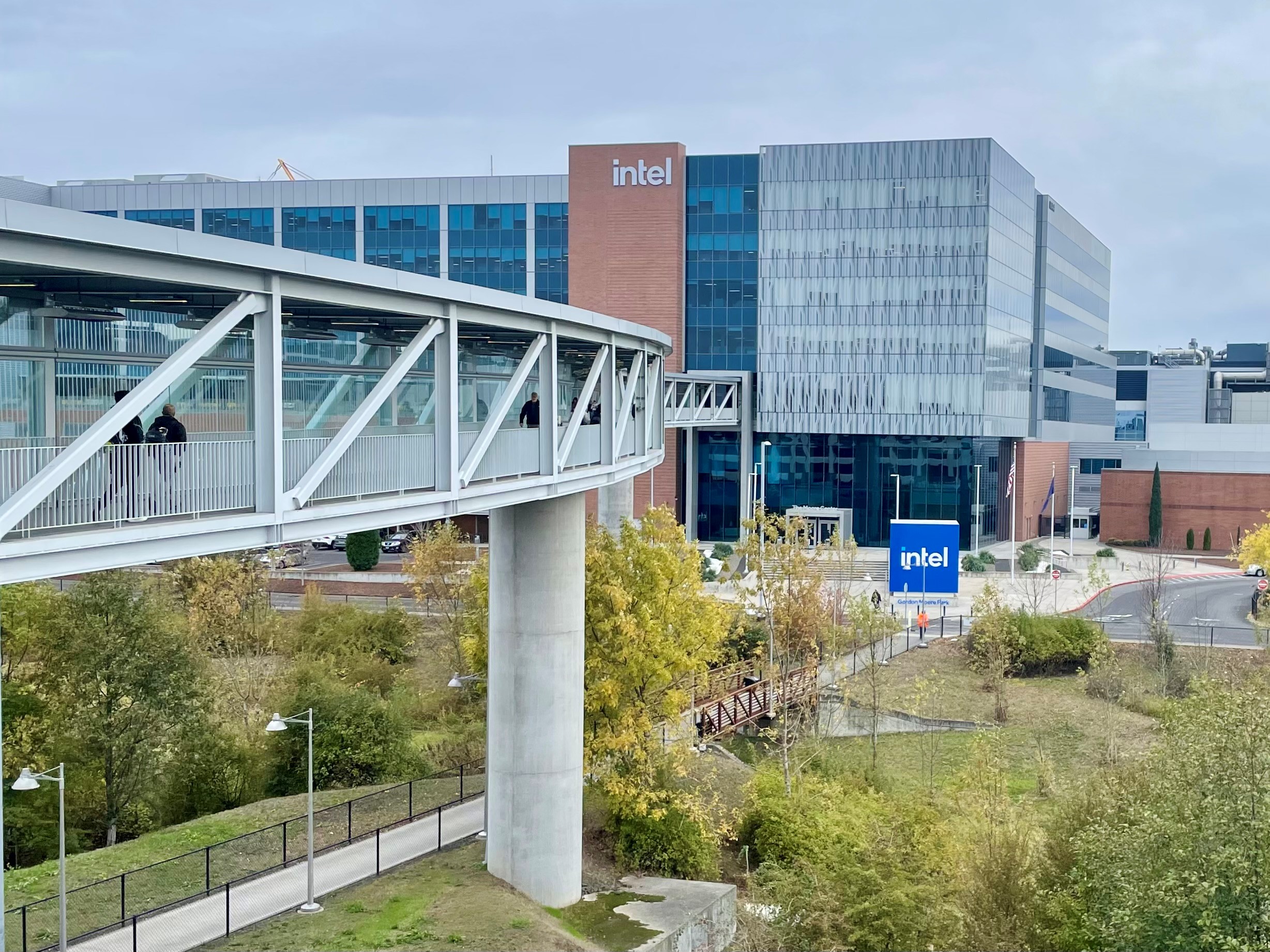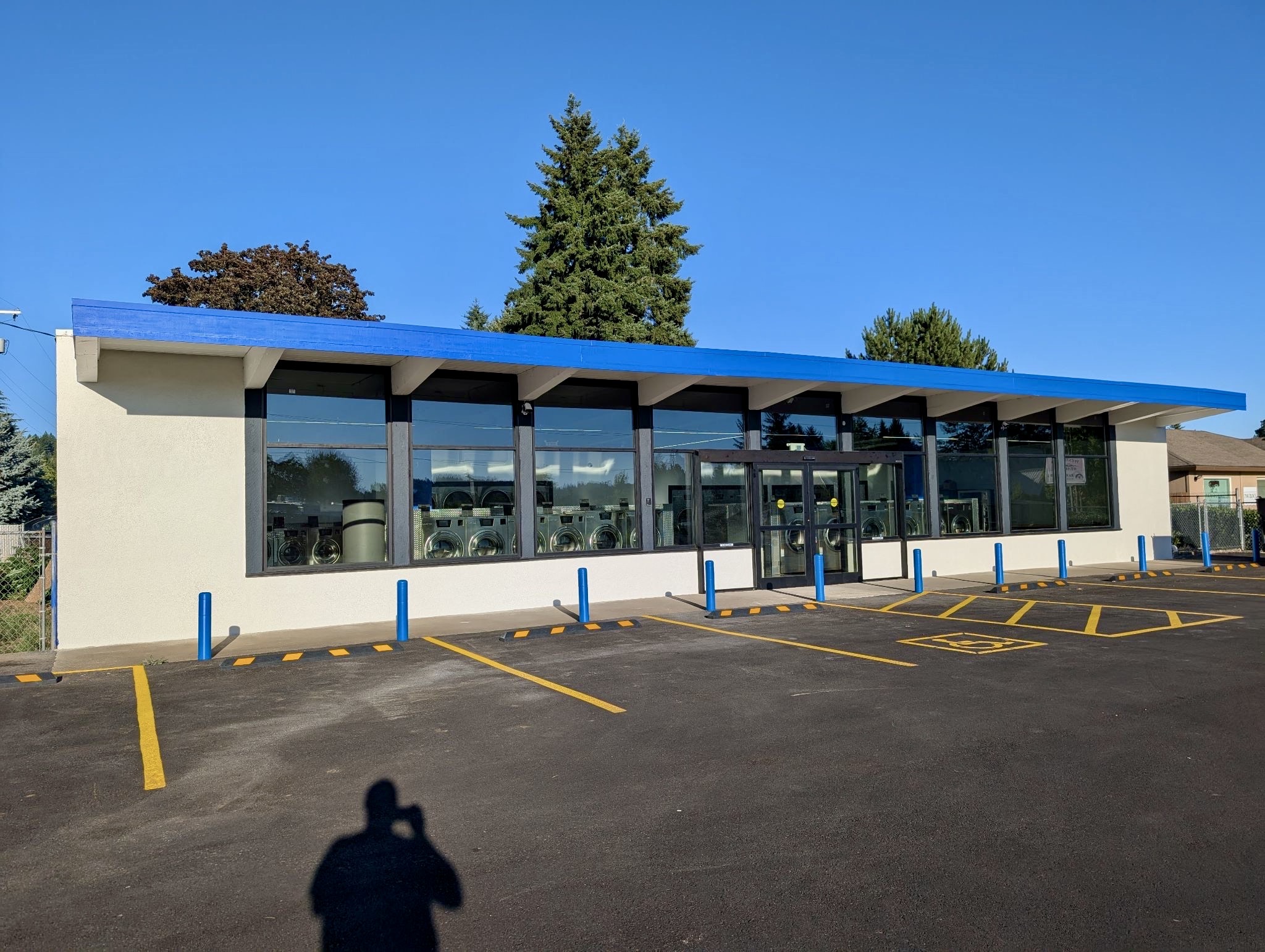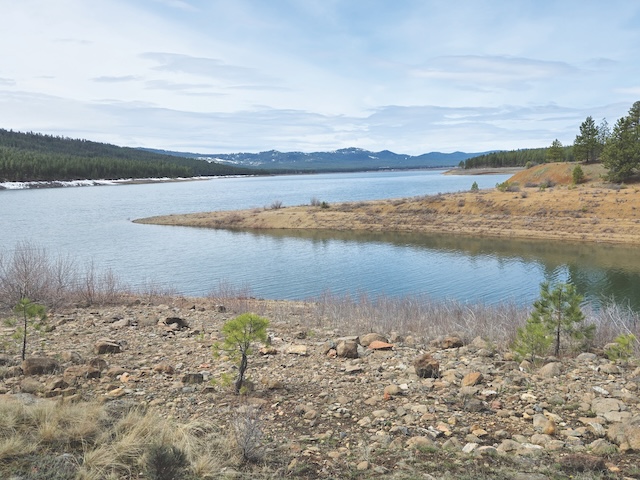New Tigard road analysis favors River Terrace 2.0 that doesn’t extend Southwest Tile Flat Road
Published 5:00 am Thursday, July 17, 2025





The Tigard City Council says it supports creating an extension to Beaverton’s Mountainside Way as an alternative to the controversial proposal of extending Southwest Tile Flat Road in the future River Terrace 2.0 into that community.
During a council workshop Tuesday, July 15, city planners offered four scenarios through the future Tigard community, part of a draft evaluation prepared by Toole Design and DKS Associates.
Both the council and staff agreed that so-called Scenario 1 would be the least expensive and most environmentally friendly of the four proposed routes and wouldn’t require the extension of Southwest Tile Flat Road.
Trending
Instead, it calls for an extension of Mountainside Way, which would cross Scholls Ferry Road heading south before exiting onto Roy Rogers Road at the Bull Mountain Road intersection.
Currently, the east side of Mountainside Way parallels athletic fields at Mountainside High School at a Scholls Ferry Road T-intersection.
“Scenario 1 does not extend Tile Flat Road. This is the ‘no-build scenario,’” Brittany Gada, a Tigard senior planner charged with overseeing River Terrace 2.0 development, told the council. That scenario would cost an estimated $18.5 million, an amount two to three times cheaper than some of the other proposals.
3 other options would include various entries, exits
The remaining three scenarios all include Southwest Mountainside Way extensions, with two proposing extensions to Southwest Tile Flat Road as well.
Those scenarios and costs include:
Scenario 2, which includes entry into the neighborhood through both extensions of Tile Flat Road and Mountainside Way with an exit on Southwest Bull Mountain Road. Estimated cost: $37.5 million.
Trending
Scenario 3, which includes the Mountainside Way extension through the River Terrace 2.0 community heading south with accesses to Roy Rogers road both at Southwest Bull Mountain Road and further south at Southwest Perth Road. Estimated cost: $33 million.
Scenario 4, which also would have entries from both the Tile Flat Road and Mountainside Way extensions, go through the future neighborhood and exit at Southwest Bull Mountain Road and Southwest Perth Road. Cost: $52 million.
“In addition to increased cost, Scenarios 2, 3 and 4 show significantly higher impacts to natural resources,” Gada told the council.
The extension of Tile Flat Road has long been seen as controversial by a variety of groups after the Washington County Board of Commissioners voted to amend its Transportation System Plan to include three so-called “refinement areas” where the county might eventually extend Southwest Tile Flat Road.
While the county identified three potential areas where the road might be extended, it didn’t specify plans for how the road would function, giving transportation planners time to determine a route.
As a result, 1,000 Friends of Oregon, the city of Tigard and multiple community members appealed the issue last year to the Oregon Land Use Board of Appeals. The board sent back the previous approval to Washington County for further consideration, stating the county misinterpreted state laws governing transportation planning.
Shared plans with Washington County
Since that July 30, 2024, remand, the Washington County Board of Commissioners has not taken any action on further transportation studies in the River Terrace 2.0 area, according to a land use and transportation spokesperson.
“The county continues to work with its city partners to help ensure a connected transportation system in this and other new urban development areas,” said Melissa De Lyser, Washington County Department of Land Use & Transportation public affairs and communications manager.
Gada said the draft of the Tile Flat Road extension scenarios analysis has been shared with Washington County staff who provided comments about the draft. The planner said Tigard will review the comments and make edits where necessary.
“The county has not yet provided feedback on a preferred scenario, but once this analysis is further refined, it will be shared again with the county, and they’ll have another opportunity to provide feedback,” Gada said. “Refinements to the analysis based on what we expect so far, we do anticipate that they’ll be minor, but if there are changes down the road that are substantive, we will be updating the council at that time … to confirm the council’s preferred direction.”
Gada said that the council’s preference for a road system through the development, which could include as many as 9,000 residents when built out, will allow planners to move forward to finalize the street network, “along with the transportation system plan amendment, which has some critical deadlines this summer and early fall.”


